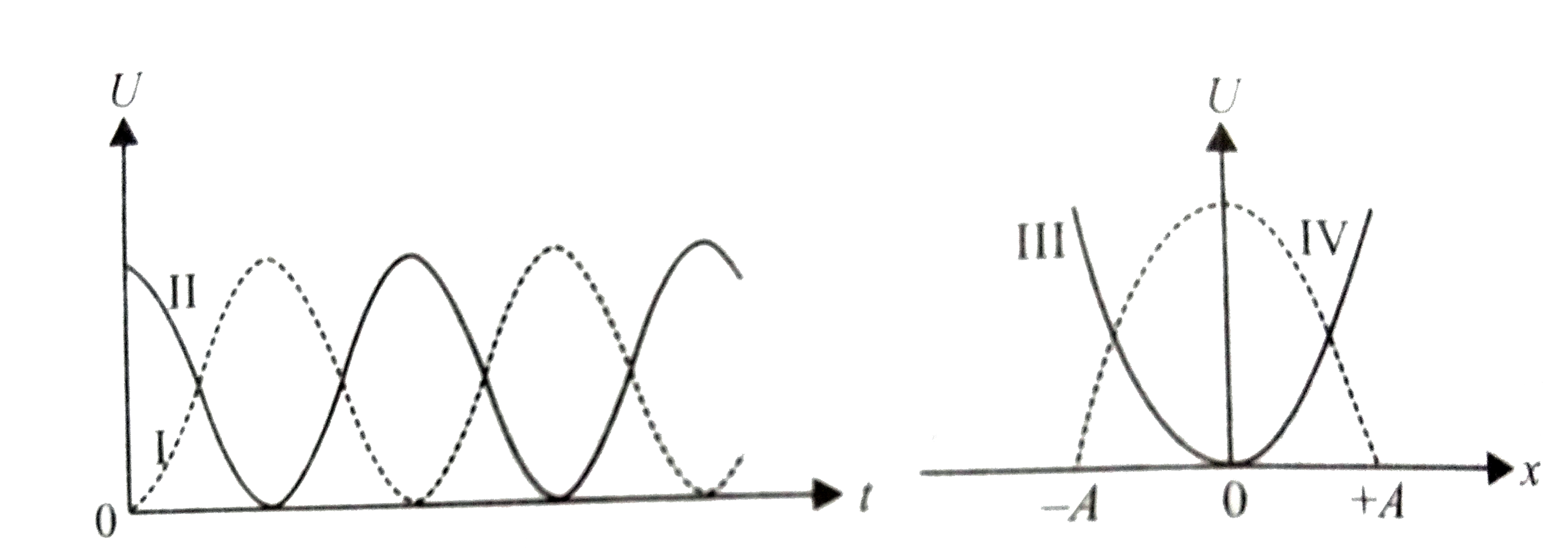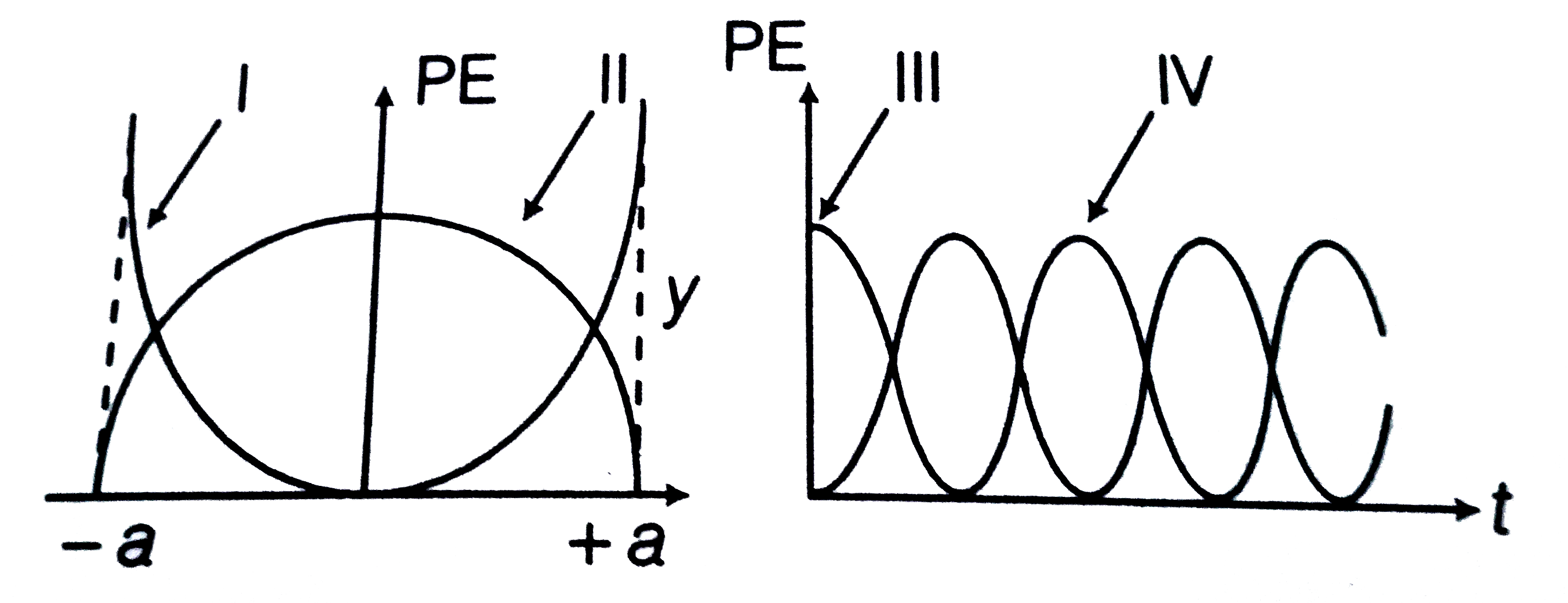For a particle executing simple harmonic motion, the displacement x is given by x=Acosωt. Identify the graph, which represents the variation of potential energy (U) as a function of time t and displacement x.

I, IV
I, III
II, IV
II, III
The correct Answer is:B
(i) For the particle, x=Acosωt i.e. it starts from the extreme position.
Its P.E.=12mω2x2=12mω2(A2cos2ωt)
We will consider its P.E. as a function of time
At time t=0,P.E.=12mω2A2
This is maximum P.E.
∴ The correct graph is (1).
(ii) P.E.=12mω2x2
We will consider its P.E. as a function of x.
At x=0, P.E. =0 and at x=±A, P.E. is maximum .
This is shown in graph (III).
Thus the correct choice is (b) I, III.
Topper's Solved these Questions
Similar Questions
For a particle executing SHM, the displacement x is given by x=Acosωt. Identify the graph which represents the variation of potential energy (PE) as a function of time t and displacement x.

(a) I,III
(b) II,IV (c ) II,III
(d) I,IV
View SolutionThe total energy of a particle executing simple harmonic motion is
View Solution
Knowledge Check
For a particle executing S.H.M. the displacement x is given by x=Acosωt . Identify the graph which represents the variation of potential energy (P.E.) as a function of time
 AI,IIIBII, IVCII, IIIDI,IV
AI,IIIBII, IVCII, IIIDI,IVThe total energy of a particle executing simple garmonic motion is (x−displacement)
A∝xB∝x2CIndependent of xD∝x1/2A body executes simple harmonic motion. At a displacement x, its potential energy is U1. At a displacement y, its potential energy is U2. What is the potential energy of the body at a displacement (x + y)?
AU1+U2B(√U1+√U2)2C√U21+U22D√U1U2
If for a particle executing SHM, the equation of SHM is given as y=acosωt. Then which of the following graphs represents the variation in potential energy?

View SolutionFor a simple harmonic oscillator moving along a straight line, the graphs which represent the variation of kinetic energy K, potential energy U and total energy T with displacement are
View SolutionA body is executing simple harmonic motion. At a displacement x (from its mean position) its potential energy is E1 and at a displacement y its potential energy is E2. The potential energy is E at displacement (x+y) . Then:
View SolutionWhich of the following graphs best represents the variation of acceleration 'a' with displacement x?
View SolutionA body is executing simple harmonic motion As x displacement x its potential energy is E1 and at a displacement y its potential energy is E2 The potential energy E at displacement (x+y) is
View Solution
